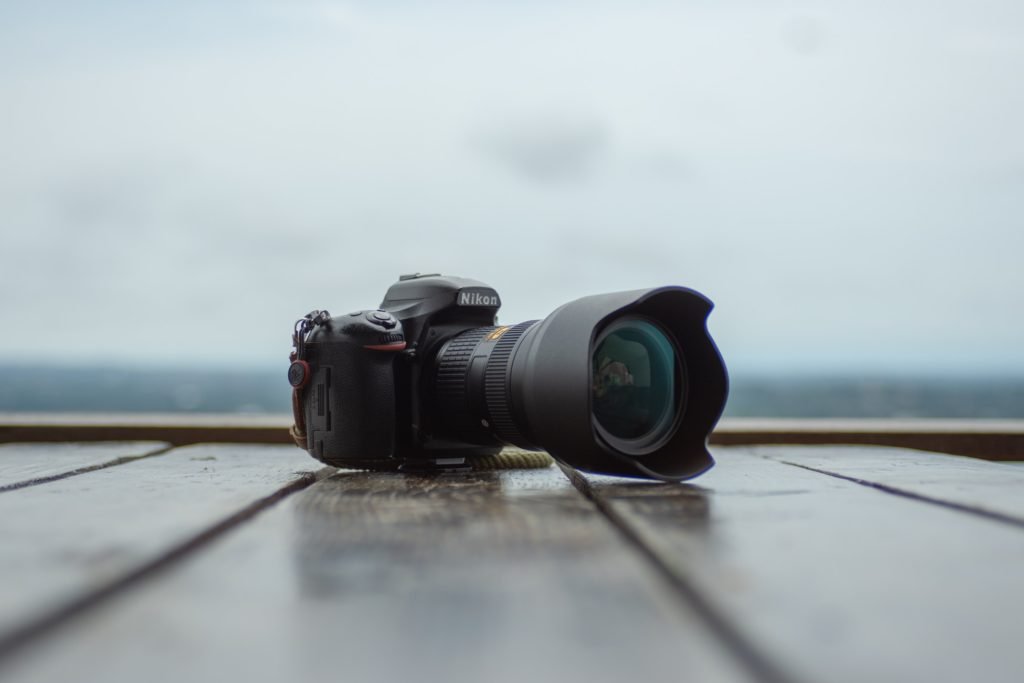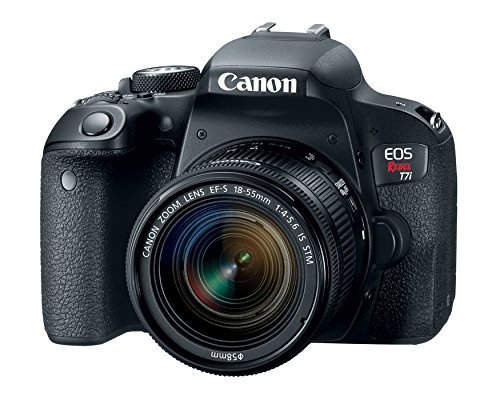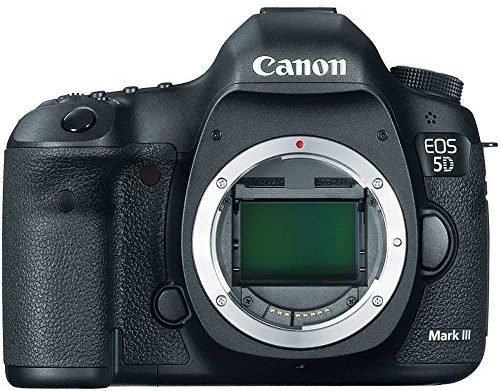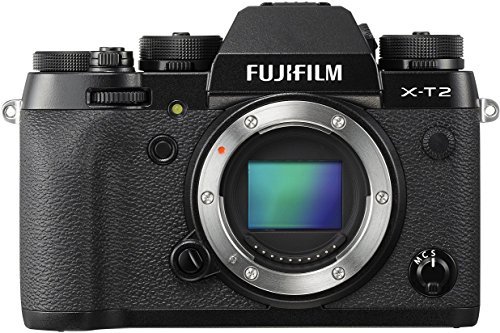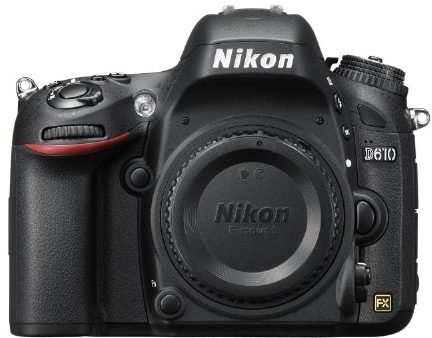If you are into product photography then you know how difficult it can be to choose the best cameras for product photography. With the availability of several cameras in the market, it is quite confusing for many to decide which device will do justice to their work and investment.
Product photography seems to be an easy task as many people would believe, but that is not the case. It requires great skill, knowledge about the genre, and the help of a really good camera to carry out this job.
A good professional camera is comprised of different features and most importantly allows you to get high-quality and excellent pictures and videos. The quality and overall makeover of the picture can make or break the tour business.
So today we will be discussing with you the top 10 Best Cameras for Product Photography that are available in the market in 2019. We have reviewed all the products closely and have discussed their different aspects in the following list.
Best Cameras For Product Photography
In this section, as we mentioned above, we will discuss 10 different cameras that are manufactured by different brands and have a separate set of specifications. But all of them have one thing in common – they can be used for exemplary product photography.
Without wasting any more time let us have a look at them.
1. Canon EOS REBEL T7i
The first product on our list is a Canon made, i.e. the EOS REBEL T7i. This camera is one of the best that you can use if you are in product photography. The camera comes with 45 AF Focus points which can be used both vertically or horizontally.
The screen has a 1080p video resolution with 60fps of electric IS. The rear panel comes with a full 1.04M dot rear LCD. The camera has a very useful 3.0-inch touchscreen for comfortable and fluid controls along with a friendly user interface.
Chipset and Sensor – Even though Canon did not make it clear, what change has been carried out with the sensor, we can consider that the company has included the chip available in the EOS 5D Mark IV to manage the pictures and eliminate noise even better.
The camera sensor has been coupled with the DIGIC 7 image processor that provides sharper images, faster rendering, and quick capture time without any delay.
Even at the highest resolution, the camera can click and render the pictures without any waiting time. The device has a 24MP APS-C sensor with a Dual Pixel design that delivers the sharpest and most refined images with a good balance in the colors and contrast levels.
Performance and Picture Quality – Coming to the other features of the camera, the Canon EOS Rebel T7i sports an ISO level between 100 – 25,600. The ISO marks I quite good and allows the users to capture good and much clearer images in a dark environment.
Even though many of the devices come with 4K resolution images, this particular camera can push it only to 1080p FHD.
The biggest improvement is in the way that the camera now manages to eliminate noise. Thus, pictures are a lot clearer and more refined. The colors are soothing and not too saturated. Even the dynamic depth in the pictures is subtle in this camera.
You will be able to get the clearest resolution and details on your pictures even when you zoom or pan on them.
- Easy-to-use interface and controls
- Fluid and smooth touchscreen panel
- Brilliant ISO levels for better image quality
- New and improved sensor for reducing noise
- The dynamic depth could have been better
- Does not come with a 4K support
- 95% viewfinder coverage
2. Nikon D800
When Nikon announced the launch of this camera, it grabbed the headlines because of the 36 million pixels it supports. It is the successor of the D700 which has become dated and thus, the D800 came into existence.
It has a 15.3MP DX-format capture mode that allows for sharp and clear images. The camera has a 51-point AF system with different 15 cross-type sensors. Another reason why this camera is popular is that it can shoot 1080p video at 30, 25, or 24 fps. The menu interface is simple yet intuitive.
Chipset and Sensor – the D800 has been powered by the EXPEED 3 processor. The chipset is really efficient in rendering images and videos without having to wait for long. The camera also has received a 36.3 MP of sensor which comes with 51 AF points and the same kind of 91k-pixel metering system.
The Multi-Cam 3500 FX autofocus system helps the camera to quickly focus on a subject and with the help of the chipset, clicks and produces the picture in a few seconds. Both the chipset and the sensor make sure that the camera performs in the most efficient and versatile manner.
The chipset helps to reduce a lot of noise from the pictures and makes them look smooth which is exactly what you need for product photography right now.
Performance and Picture Quality – the ISO range for the D800 is 100 – 25,600 which makes it very promising even in low light conditions. The 36.3 million pixel density plays an important role to produce an excellent resolution.
However, due to the exemplary pixel density, the camera takes a lower ability to take pictures in continuous mode. Shooting pictures in native settings that are within an ISO range of 100 – 6400 is recommended for more efficient performance and picture quality.
The pictures are really crisp and nicely balanced in terms of brightness, contrast, and highlights.
Once again due to the high pixel count, the dynamic range suffers, but still, it is manageable. The AF system in the D800 is one of the most efficient in this list which locks onto its subject quickly and accurately. It is surely one of the best cameras for product photography.
- Excellent resolution and immersive details
- The accurate and versatile AF system
- Brilliant ISO range up to 25,600
- Efficient EXPEED 3 processor
- The dynamic range could have been better
- No touchscreen controls at this price
- Takes time to render pictures in burst mode
3. Nikon D7200
Another Nikon product on this list that can help you to get some of the best pictures in the market is the D7200. It was launched as the successor of the D7100 and the brand has managed to infuse new features to take over and generate mesmerizing results.
The camera comes with a 24.2 million pixel density and has a 24.2MP sensor for capturing images of the highest 1080p resolution.
However, the camera does not come with an Anti-aliasing filter which would have been a great addition because it helps to reduce interfering elements and produces vivid images.
Chipset and Sensor – the D7200 is a firm upgrade from the D7100 in terms of the chipset that has been us. The D7200 sports a brand-new EXPEED 4 processor which is now able to deliver much higher levels of image resolution and rendering details.
The new processor is able to provide larger buffers for continuous shooting. The EXPEED 4 is also able to increase the effective resolution and provides sharper and more refined images than the EXPEED 3 chipset. Coming to the sensor, the D7200 sports a 24.2MP CMOS sensor and due to the absence of the Anti-aliasing filter, it maximizes the resolution but attracts more noise in the pictures.
It supports 6fps burst shooting and the battery life is also increased by 15% and now stands at 1100-shot battery backup.
Performance and Picture Quality – the Nikon D7200 comes with an ISO range of 100 – 6400 as the native specifications but can be expanded up to 25,600 if needed. So shooting in low light conditions will not be a problem but keep in mind that the absence of the Anti-aliasing filter will attract noise to your pictures.
So try to keep the settings to their native configuration. The Matrix (all-purpose) metering system produces brilliant images that portray punchy colors, balanced saturation, and subtle brightness levels. The camera comes with different lighting conditions really well and the credit goes to the Automatic White Balance System.
No artificial smoothing of images is visible and the pictures are crisp and clear. Thanks to the new chipset and the improved sensor, the D7200 performs much better than its previous generations.
- The accurate and versatile AF system
- 24.2MP AA-filterless sensor
- Sturdy and robust body construction
- Integrated with different features
- Brand new EXPEED 4 processor
- The anti-aliasing filter is not available
- No touchscreen feature is available
- Higher noise levels at 25,600 ISO
4. Canon EOS 70D
Canon enthusiasts were thrilled with the launch of the EOS 70D which has features that make it a perfect option for product photography. The 70D was launched with a new sensor and a brand-new pixel count.
Unsurprisingly, the 70D also comes with a touchscreen control panel that can be used to access all the different menus and configurations in the DSLR. The touchscreen panel is also an LCD panel that provides good viewing angles and has WiFi integration.
Chipset and Sensor – the Canon 70D comes with a brand new processor i.e. the DIGIC 5+. It is a great processor in terms of overall performance and efficiency and a true upgrade from the earlier DIGIC 4 processor. Now users can get enjoy continuous shooting at 7.0 fps which was earlier capped at 5.3fps.
It is not only the processor that is new in the 70D, but the sensor is also new as well. It comes with a New Dual Pixel CMOS AF sensor which enables the camera to capture more refined images and high-resolution images even in low lighting conditions.
This new sensor is also able to provide Phase-detection Autofocus that efficiently tracks the subject and accurately clicks the picture maintaining high dynamic depth.
Performance and Picture Quality – the ISO levels of the Canon 70D are between 100 – 12,800 but can be expanded up to 25,600 as well. So shooting images in low light will not be a very difficult task and also thanks to the New Dual Pixel CMOS sensor, the 80D can capture images with much less noise.
The Automatic White Balance System is one of the best features of this camera and provides pleasant-looking images with sharp details. The images were inclined neither toward a cooler tint nor warm, so you will get 100% accurate shots most of the time.
Even the pictures captured at ISO 12800 have an excellent amount of details available in them. Keeping the settings below the 6400 ISO mark will provide even better results. Surely it is one of the best cameras for product photography in the market.
- Brilliant and accurate image quality
- A plethora of controls over the UI
- Responsive and fluid touchscreen
- Built-in Wi-Fi integration
- Accurate and quick 19-AF system
- Creative Filters can be used in Live View only
- Viewfinder level is at times tricky to see
- In high contrast, there are Metering problems
5. Sony Alpha SLT-A65
The Sony Alpha SLT-A65 is like a “little brother” of the Alpha A77 which comes with a host of different features like the in-built GPS and the “Anti-shake” sensor. The A65 features an improved sensor that is responsible for better and brighter images.
Users can now shoot videos at 10 fps FHD at 24.3 resolution which comes with continuous Auto Focus ability. The camera has a nice-looking exterior design that is robust and has a durable Polycarbonate body.
Chipset and Sensor – the camera runs on the BIONZ X image which can also be seen on the Sony A6400. It is the latest processor by Sony that can offer a significant increase in the overall performance of the camera.
Coupled with the brilliant 15 AF points, the image reproduction is accurate. Images are rendered very quickly and the shutter speed is quick as well as <0.05. The Sony Alpha SLT-A65 comes with a 24.2MP APS-C CMOS sensor which helps to provide sharp and refined pictures at the highest resolution.
The sensor could produce good macro shots and generates gorgeous images in different lighting conditions. The wide-angle performance of this camera is also decent due to the excellent viewing capabilities of the sensor.
Performance and Picture Quality – in terms of ISO performance, the camera can manage ISO levels from 100 – 16,000. But the noise levels are significantly higher when the ISO crosses the 12800 mark.
From ISO 100 – 600 the noise levels are very less and unnoticeable. But they start appearing once the ISO reaches the 800 mark. The Auto White Balance feature provides a good quality balance between the saturation levels but still, there is a slight inclination towards the warmer side.
The 24.7 million pixel density is more than enough to produce good results in terms of picture quality and video reproduction. The battery life is significantly better than most other competitors in the market and the new OLED EVF is phenomenal.
The EVF is so well tweaked that it is hard to describe in words. You will need to test it in the real world to check how good it really is.
- Built-in GPS integration
- Striking new OLED EVF
- Accurate and versatile color accuracy
- The continuous focus during 1080p shooting
- JPEG artifacts are visible in some pictures
- The low light results are average
6. Canon EOS 5D MKIII
Canon has always been one of the top contenders in the DSLR market. Since they launched their first DSLR back in the late 1960s, the EOS 650, the Canon EOS 5D MKIII is now one of the best and most advanced cameras in their lineup.
The 5D MKIII is not only one of the best cameras for product photography but Canon has launched it to target photographers from all genres. Coming with an improved image sensor, ISO 100 to 25,600, and one of the most promising processors right now, the Canon EOS 5D MKIII is surely going to impress you.
Being such a premium and versatile camera with powerful and efficient hardware specs, the camera is a little pricey but worth every dime.
Chipset and Sensor – the Canon EOS 5D MKIII runs on the latest DIGIC 5+ processor. The chipset provides an ISO range from a standard level of ISO 100 – 25,600. But if you want you can expand it up to ISO 102,800. This is one of the most prominent aspects of the DSLR and you will certainly get extraordinary pictures even in the lowest light levels.
The chipset is also able to provide you with faster image rendering and has a chromatic aberration correction. So, complex image processing of any format is not a difficult task to achieve.
The camera comes with 22.3 megapixels of full-frame CMOS Sensor that are coupled with a 61-point AF system with 41 cross-type AF points and 5 dual cross-type points. The sensor and the chipset support continuous shooting at 6fps. The task of framing images has been finally revamped by Canon as the 5D MKIII comes with 100% coverage.
Performance and Picture Quality – when it comes to the overall performance of the camera, the EOS 5D MKIII really brings a new level to the industry.
The LCD touchscreen 3.2 inches control panel provides flexible maneuvering and very responsive touches. The colors are bright and natural without any trace of artificial rendering.
Fine details are preserved well, even when the conditions are dark or very bright. The sharpness and clarity in the pictures are phenomenal with an excellent balance between all the aspects of a perfect picture.
The brilliant ISO levels help you to get high-quality pictures in low light, even though there is noticeable noise when the ISO crosses the 25,600 mark. 61-point wide-area autofocus ensures that you get accurate and very sharp image quality even if the object is moving.
You can surf between the different modes available in the camera to capture preferred pictures.
- Full-frame 22.3-megapixel sensor
- Great quality sound
- Full-HD video with manual control
- High dynamic range imaging
- High-speed continuous shooting
- The viewing angles of the LCD panel are average
- The very sensitive metering system
- No sensor-based image stabilization
7. Fujifilm X-T2
Fujifilm has been one of the most renowned and popular DSLR makers in the world. The Japanese imaging giant has some of the most sophisticated cameras in its lineup and the Fujifilm X-T2 is one of them.
The camera supports 4K video capture and has an outstanding resolution. Don’t forget that this is Fujifilm’s flagship camera that comes in a mirrorless version. The device has a significantly large and bright electronic viewfinder and a 3-inch tilt screen.
The camera is mostly weather-proof with two SD card slots and the company has also improved the overall autofocus speed as well.
Chipset and Processor – the Fujifilm X-T2 is powered by the X-Processor Pro which is the company’s flagship processor at the moment. It enables the camera to capture 4K images and high-resolution videos which comes in a brilliant resolution and supports 325 AF points.
The camera sports an X-Trans CMOS III sensor that has been improved and revamped to meet the increasing demands of the needs of photographers. Both the components of the camera not only help to provide sharp and vivid images and crystal clear 4K videos, but the continuous AF and subject tracking features have also improved a lot as well.
The hybrid AF system helps to enhance the performance of the phase-detection and contrast-detection systems.
Performance and Picture Quality – the X-T2 has an all-rounder performance in terms of image quality and overall functionality of the system. It comes with ISO 200 – 12,800 and is expandable to ISO 100 – 51,200.
The 8fps burst shooting provides amazing video quality and performance to the users. It has different Film Simulation modes which can be adjusted according to your preferred settings. The pictures are realistic and alluring with fine contrast and saturation levels.
The colors do not look too saturated and hence there is a natural tone in them.
The dynamic range is very good at lower levels of sensitivity but at higher ISO levels you will be able to notice significant noise in the images or videos. So it is recommended to keep the ISO levels within the ISO 1600.
- Greatly improved and enhanced Auto Focus
- Bright electronic viewfinder
- Efficient 24.3MP X-Trans CMOS sensor
- Several kinds of Film Simulation modes
- The LCD panel is not a touchscreen
- Significant noise in higher ISO levels
8. Sony Alpha a6000
Another Sony product that has made it to our list is the Sony Alpha a6000. If you are low budget but still want to get your hands on a mirrorless, Full HD camera, the Sony Alpha a6000 makes a great option.
It is available at a price that is close to around $500 which makes it a very budget-friendly option for product photography.
Even though it has been succeeded by the Alpha A6300 and Alpha A6500, the A6000 still manages to deliver what it has done so well over the years – excellent picture quality with several features packed in a compact-sized device.
The sensor comes with a total of 179 autofocus points.
Chipset and Sensor – the Sony Alpha a6000 is powered by the Bionz X image processor which is more powerful and efficient in rendering images and in the task of color reproduction when compared to the Bionz processor.
The brand-new processor has been accompanied by the new autofocus system which is much more efficient and covers 92% of the frame. Unlike the previous generation systems which provided only 50% of the frame.
The A6000 also has a 24.3 MP APS-C CMOS sensor compared to the previous generation’s 16.1 MP sensor. This new sensor supports Full HD movie shooting up to 1080p at 60 fps. It also has exciting features like Intelligent Scene Recognition and Faces Detection as well.
The camera has also received a buffer upgrade which allows the device to capture more RAW images before the buffer gets filled.
Performance and Picture Quality – the Sony Alpha a6000 is truly a compact powerhouse when it comes to product photography. The camera brings a brand new processor and sensor to the users who are capable of capturing stunning pictures that have more realism and less artificial elements.
The colors are natural and there is an excellent balance in the contrast levels in the images. Intelligent Scene Recognition helps to sharpen the picture and tone the colors according to the natural appearance.
The image noise and picture correction by the Dynamic Range Optimizer (DRO) and High Dynamic Range (HDR) make way for lucid images and evocative videos at 4K resolution.
9. Panasonic Lumix ZS70
Panasonic has also made its way to this list by launching the Lumix ZS70. This compact and easy-to-carry device can be one of the best cameras for product photography if you are low on budget. Available at a price of around $600 is a great option to capture high-resolution product images and videos.
It brings the benefit of 4K Post Focus with internal focus stacking which helps to revamp the image quality and makes sure you get a well-balanced picture in its true sense. It is one of the smallest cameras that has a 10x optical zoom which helps you to focus on what’s important with sharp resolution.
Chipset and Sensor – you will be glad to know that the Panasonic Lumix ZS70 has been integrated with the company’s latest Venus Engine processor which is a huge upgrade from the previous generation processors.
It is not only the processor that Panasonic has paid attention to, but they have revamped the Depth-from-Defocus Autofocus technology which helps to provide more dynamic range and clarity to the images.
The sensor that has been provided with the camera is a 20.3MP BSI CMOS. The sensor performs really well in different lighting conditions. The camera has a Hybrid O.I.S. technology which helps to provide sharp background and crystal clear 4K videos.
Performance and Picture Quality – the ISO range of the Panasonic Lumix ZS70 has a decent overall performance. The dynamic setting helps to provide better contrast and the highlights of the images pop up well.
However, the camera struggles to maintain a good balance between the noise levels. There is a chromatic aberration visible in images that are clicked in a darker environment. But the quality of 4K footage is surprisingly good and there were ample details in the video with excellent stabilization.
- Excellent zoom range
- The selfie feature works very well
- The image stabilization feature is efficient
- 4K image resolution at this price
- The viewfinder is small
- Can be laggy at times during the start
- The grip could have been more efficient
10. Nikon D610
The Nikon D610 is a brilliant option for those who want to capture rich details in the picture with brilliant textures. However, it has been priced a bit more than even the Canon 6D.
It has a 24.3 million pixel FX format and comes with the new Continuous Quiet mode which offers brilliant stability at 6fps instead of 5.5fps. The camera has some more advanced features like the Automatic Scene Recognition system which is used by the Metering and White Balance features.
The ISO 100-6400 is the native setting which helps to provide good quality images in dark conditions.
Chipset and Sensor – 24 megapixel CMOS sensor comes with a brilliant EXPEED 3 processor that provides brilliant support to the overall performance of the camera.
You will be glad to know that the camera offers 100% frame coverage. The EXPEED 3 is however succeeded by the EXPEED 4 which offers much better high-detail photos at low levels up to ISO 3200. The sensor is a 24.3MP CMOS which produces excellent quality videos and pictures that have a nice balance in the contrast levels.
Performance and Picture Quality – the performance of the Nikon D610 is really good in terms of sharpness and overall clarity. The DSLR helps to ensure that you get a nice balance of the highest levels and there is a delicate balance between the contrast and saturation levels.
The operation speed and rendering time are quick and ensure you get to click several pictures at the same time with an excellent buffer time. The pictures have decent sharpness and dynamic depth in them which makes them look realistic and preserves their natural tones.
The colors are not inclined towards any particular color tone and are on the natural texture.
- The high build quality of the exterior body
- Sharp and high-quality pictures
- Excellent Autofocus system
- The sensor is clean and vivid
- Autofocus is clumped in the center
- JPEG available only in HDR mode
So here are the top 10 products which are the best cameras for product photography. All the cameras have been checked and tested by experts and their performance is described in a detailed manner.
So you can read the reviews and get to know which DSLR will suit your needs the best.
Things to Consider While Buying the Best Cameras for Product Photography
Since there are several cameras that are available in the market which you can use for product photography, we have jotted down some essential things which you can consider while purchasing a good camera for product photography.
Image Quality
You need to consider the image quality of the DSLR before purchasing the camera. The pixel density of the camera is an important thing to consider. It is a great advantage if the camera comes with a noise reduction feature.
This will lead to less grainy images and high-resolution images or videos in low-light conditions.
Quality Optics and Sensor
the quality of the optics and the sensors are also important things to consider. The optical lens and sensors of the camera are responsible for generating high-quality images and videos. They capture the true essence and natural textures and infuse them in a photograph.
So the DSLR needs to have good-quality optics and sensors.
Exterior Build
the exterior build quality of the camera should also be taken into consideration. The camera should come with a weatherproof body that protects them from water, dust, and splashes. So this will help you to use the camera in different weather conditions and provides more versatile usage.
Cameras that have Polycarbonate material or high-grade plastic provide a comfortable grip and durable finish.
Processor
the processor of the camera is also an important factor to check. The camera should have an efficient processing system that will help to render images quickly and accurately.
Always look for DSLRs that come with a processor that is not more than 2 years old, so that you can get efficient results.
Conclusion
Out of all these 10 best cameras for product photography, if you want to get the best results in product photography, then you can surely consider the Nikon D800 or the Canon EOS 5D MKIII.
If you have a high budget and want to get the most efficient performance and sophisticated results, then the Canon EOS 5D MKIII is one of the best options that you have. The Nikon D800 can be a good option in terms of a short budget.
Other products which we have mentioned are also some of the best devices to try out. If you have any queries, do comment down below and we will be more than happy to help you.
